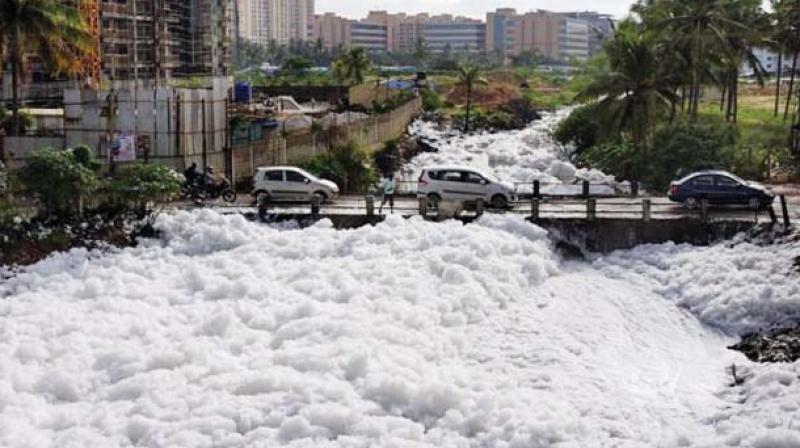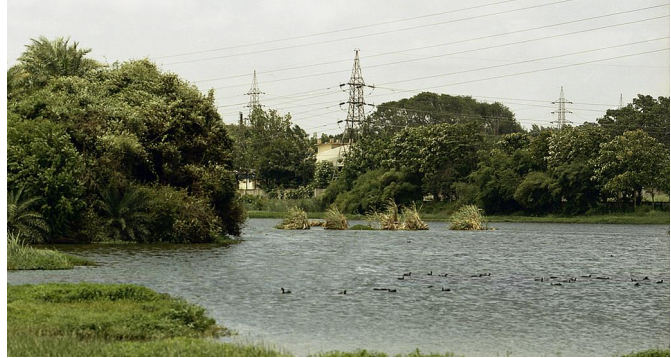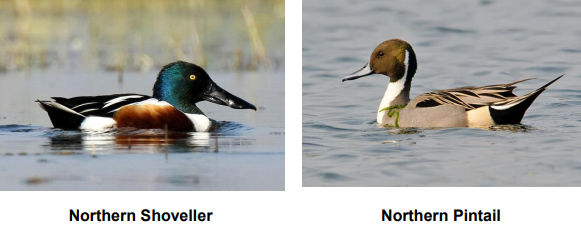Bengaluru’s natural beauty was once the jewel in its crown. Fondly called the ‘Garden City’ of India, Bengaluru was revered for the amount of scenic beauty it had to offer to its residents and visitors alike. Lakes, parks, and canopies of trees were scattered around the city, always a sight for sore eyes. However, over the years, rapid urbanization has massively impacted the flora and fauna of Bengaluru. The rapid development of the city, the construction of buildings, the metro, and a steady increase in population have systematically contributed to the stripping away of the city’s natural resources, making lake conservation and protection an important issue.
Lakes in the city have suffered the most at the hands of ‘modernization’. Today, over 80% of lakes in Bengaluru are severely polluted. As per a report in 2018, more than half of India’s critically polluted water is found in Karnataka, of which 17 lakes with severe chemical pollution are found in its capital.

Lakes serve many purposes and are especially important for tourism. If the area around a lake is developed appropriately, it can be transformed into a peaceful, tranquil landscape that visitors can frequent to admire nature’s beauty. Tourists and travellers always seek out natural landscapes to unwind at when on a vacation. Locals themselves enjoy lakes and parks for leisure activities on a daily basis.
If a lake is maintained, more tourists will visit it which will serve as an incentive to the government to further contribute to its upkeep. The cyclical aspect of lakes benefitting tourism and vice versa is extremely relevant to a city like Bengaluru. Ulsoor, Sankey Tank, Agara, and a few other lakes have been taken care of by the government which is why today they are popular spots in the city. However, only a few lakes are maintained, several others have been left in sorry states.
Major Causes Of The Degradation Of Lakes
A general disregard for natural resources has been the major contributing factor to climate change and related crisis we are facing today. The lack of sustainable development is why the world is rapidly losing control over the condition of the environment. The state of lakes in the city is worsening over time because of large-scale encroachment, the dumping of sewage, and the release of toxic industrial effluents along with pesticides. Idol immersion has always been an issue, but citizens continue to immerse idols during religious festivals which only worsens the pollution.
As infrastructure booms, more lakes have made way for high-rise buildings. The ones that haven’t dried up, are filled with waste, and the water quality is severely affected. The fish are dying and the areas surrounding certain lakes are unfit to even visit because of the unbearable stench. Bellandur Lake has been in the news consistently for years now because of its deteriorating condition. It has even caught on fire because of the toxic chemicals present in it.
When it comes to the management of or conservation of these natural spaces it becomes easy to shift the responsibility on others’ shoulders and wash our hands off it. But if we are collectively benefitting from them, isn’t the protection and conservation of these resources also our collective responsibility?
Why Lakes Are An Essential Part Of An Ecosystem
Lakes are an integral part of any ecosystem, they sustain a huge biological diversity and help maintain the ecological balance of a region and support life. A freshwater source is a boon to the people living around it as well as the flora and fauna in an area. The primary function of lakes include:
- Recharge of groundwater
- Flood mitigation and erosion control
- A habitat for diverse flora and fauna
- Recreational activity and tourism
Lakes and wetlands are beneficial in a number of ways, which is why it is of the utmost importance to preserve them and work towards their constant upkeep.
Is The Karnataka Government Doing Enough?
According to government reports, out of the 167 Lakes in BBMP (Bruhat Bengaluru Mahanagara Palike) custody (148 live lakes + 19 disused lakes), 64 Lakes are developed, and 24 are under various stages of development. A Lake Development Authority (LDA) was put in place in 2002 to oversee the lakes along with their protection, conservation, and well-being after unchecked development. However, in a few years, the LDA became partially privatised which became a huge point of contention for conservationists. 1 It was obvious that the vested interests of private parties would get in the way of the proper management of the lakes.

After the controversy, the Karnataka government decided to allocate the conservation of lakes to authorities like the BBMP, the Forest Department, and the Bangalore Development Authority (BDA). Despite supposed measures to purify lakes in the city, the government has been far from successful. The condition of Bellandur and Varthur lakes speaks volumes about the inability of the government to follow through with its agenda to conserve lakes.
In a new scheme to tackle the water crisis, the government has declared 2019 to be Jalavarsha (Year of Water). As per the initiative, the government aims to tackle Karnataka’s water crisis by helping rejuvenate water bodies and make several small villages drought-free in the coming years. Part of Jalavarsha are the Jaladhare and Jalamrutha, schemes designed to oversee the rejuvenation of lakes and the underground table. It is left to be seen if these new schemes are able to successfully deal with the water crisis and actually help lakes that are severely degraded.
How Citizens Initiatives Have Become A Lifeline For Lake Conservation
While the government and its initiatives to revive lakes in Bengaluru have faltered at many steps, citizens have taken matters into their own hands. It is thanks to proactive, concerned citizens that a number of Bangalore’s lakes have been successfully revived and are still maintained well. These success stories serve as reminders to the rest of the city, urging people to take action and fight for our natural resources. Kaikondrahalli, Sarjapura Road, Munnekolala, Marathahalli, and Kowdenahalli, KR Puram are some examples of lakes that have been revived after encroachment, excessive dumping of sewage and waste disposal. 2 Citizens came together, sometimes with the help of the BBMP, and revitalised these water bodies for the benefit of the environment.
One Mechanical Engineer Is On His Way To Reviving 45 Lakes By 2025
38-year-old Anand Malligavad is an inspirational example of the belief that it only takes the vision of one individual to spearhead large-scale change. Born in Karamudi, a small village in the Koppala district of Karnataka, Anand moved to Bengaluru to study mechanical engineering several years ago. Since the means of livelihood in his village were limited, he decided to move to Bengaluru to pursue his dreams. In Bengaluru, Anand pursued his higher studies and became a mechanical engineer.

During his career as a mechanical engineer, Anand was a part of many CSR initiatives. It was at this time that he realized his passion for the environment. He first began working on lakes in Bengaluru in 2017 with the help of the Sansera Foundation. In a short span of time, he has managed to rejuvenate four lakes. He plans to save 45 more by 2025. After 16 years of working at Sansera Engineering, he quit earlier this year to dedicate his time to lake conservation.
Anand’s technical background in engineering has helped him understand the nuances of lake conservation. The first lake conservation project he started was at Kyalasanahalli near Anekal which took him only 45 days. When Anand found the lake it was reduced to a dumping ground by the villagers and was mostly dry. This was when he decided that the conservation of such a crucial resource was important it was time to make a change.
Anand did not take any help from the government or from industry experts. The local community aided him in achieving his goal. He was able to remove nearly 4,00,000 cubic meters of mud from the lake and the mud was then repurposed into small islands all across the lake in only 10 days. The islands are now a home for birds and a huge number of plants and trees. Today, “a total of 18,000 saplings, 3,000 trees bearing 22 varieties of fruits, 3,000 native species of plants, and 2,000 ayurvedic plants, now populate the area,” says Anand proudly.

After this, Anand even went on to create two Japanese Miyawaki forests in the lake’s surrounding areas. The Miyawaki method of forestation involves planting multiple trees in close proximity to each other in a small pit. This directly enhances the green cover. It was after his work on the Kyalasanahalli Lake that Anand realized his true calling. “I left my Sansera job, and began to work on other lakes, all on my own,” he says. Anand enjoys working with the local community and gets most of his approvals to work on lake conservation from local gram panchayats.
After the first lake conservation, Anand got help from bigger organisations for his other two projects: Vabasandra Lake near Bommasandra, and the 16-acre of Konasandra Lake. Konasandra Lake was in a deplorable state, worse than Bellandur Lake. The pollution had altered the water into a toxic gel-like substance. The conservation of this area was successful and it is now back to its natural state thanks to Anand.
He is currently working on the conservation of the Gavi and Nanjapura lakes. Seeing his remarkable work, the Karnataka government has given him a seat on the technical panel that oversees the Jalamrutha project. He hopes to use this position to bring about new policies that will revive many more of the city’s lakes.
Professor KS Sangunni’s Efforts Towards Yelahanka Puttenahalli Lake Conservation
Another individual making a difference is retired IISc professor Dr. KS Sangunni. Dr. Sangunni started a dedicated lake conservation trust with a group of concerned citizens to help rejuvenate the Yelahanka Puttenahalli Lake. What was once a beautiful lake with lush greenery soon deteriorated into a dumping ground for sewage.

“The stench used to be unbearable as I would walk by this lake. It was extremely disappointing to see its condition as it was once a place I would walk past and admire back in the early 2000s.” Dr KS Sangunni’s interest in the environment was peaked during a conference abroad. Once he returned, he began his research and with the aid of his colleagues, he learnt a lot about lakes, lake conservation, and the ways in which they could be revived. He then set out to cleanse the Yelahanka Puttenahalli Lake by treating the sewage water. His colleague, Professor Chanakya, helped design the sewage processing unit.
With the formation of the Yelahanka Puttenahalli Lake and Bird Conservation Trust around 2010, Dr Sangunni and his team (around 6-7 people in total) worked tirelessly not just towards lake conservation but also to ensure that the area around was suitable for a host of birds that inhabited it. A lot of research went into understanding the kinds of birds that migrate there and it continues to guide the trust’s efforts in lake conservation and maintaining the surrounding area.

The Forest Department constructed a diversion channel around it to stop the sewage from directly entering the lake and now the sewage is directed to an adjacent processing unit, where it is treated and then released into the lake’s waters. Since it is difficult to keep the lake full with just rainwater, the treated sewage water is returned to the lake.
Dr Sangunni believes that the main reason for the condition of these lakes is urbanisation, land-grabbing, and the massive amount of waste generated by citizens that are eventually dumped in the lake. “We don’t care about nature,” says Dr. Sangunni, stating that the disregard people have for their surroundings is the main reason for environmental problems. “We have to understand that nature is a cycle and everything is interdependent on each other. Breaking the cycle will impact all of us.”
To go to the root of the problem and understand why citizens remain inconsiderate towards nature, Dr KS Sangunni believes that children should be educated at the school level about the various aspects of the environment, how it is being destroyed, and the growing need for conservation of these spaces. “It is essential to instill curiosity in children and make them question things about the world around them. The change will only happen when children are educated and they grow up understanding the environment around them.”
Also Read: Here’s How You Can Be A More Responsible Traveller
In the future, if funds permit, the lake conservation trust aims to set up an interpretation center on-site, near the lake, where students will be encouraged to come and conduct research on birds and lakes along with the importance of maintaining the environment and protecting it.
But, funding has posed a challenge to the trust. The trust constantly approaches companies as well as the government for funds to keep up the sewage treatment plant and enrich the area even further. However, the response time is slow and funds remain limited. Dr. KS Sangunni hopes that as more people are made aware of the need for lake conservation and the present condition of lakes via social media, they will offer their assistance.
‘Wake The Lake’ – An NGO’s Inclusive Initiative To Help Lakes
While citizens like Anand Malligavad and Dr. KS Sangunni started work by themselves, an NGO has also made attempts to collaborate with citizens toward lake conservation to help improve lakes in Bengaluru. United Way Bengaluru started the ‘Wake the Lake’ initiative to improve the city’s lakes. Along with the help of the BBMP and local communities, the NGO has worked with 18 lakes in the Bengaluru urban area. These lakes include Kowdenahalli, Seegehalli, and Sheelavantha among others. The infrastructure around these lakes has also been developed; gates, benches, and toilets have been constructed. Saplings have also been planted.

Radhakrishna Pradeep, the project manager of ‘Wake the Lake’ explained that the encroachment of lakes began in Bengaluru began when the city started expanding. Nobody was willing to take measures to prevent the lakes from reaching the state they are in today. “We partnered with the BBMP and they helped desilt the lakes and create boundaries. Once the boundaries were created, we helped create wetlands at specific lakes so the water can be purified.” The aim of the NGO was to mobilize local communities so they could also partake in the upkeep of these lakes.
United Way Bengaluru was successful in forming associations with the locals. Communities were briefed on how they could approach the BBMP, file their grievances, and ensure the smooth functioning of lake-related operations. The aim of the NGO is to not just better the lakes but also enrich biodiversity in the area. By working with local communities, they have been able to achieve this.
With this three-way agreement between the BBMP, the local community and the NGO itself, United Way Bengaluru has made impressive strides in revamping the city’s lakes. “After Bengaluru Urban, we aim to work on lakes in rural areas of Bengaluru. What is important is initiating a sense of emotional connection among the local citizens so that they understand why it is so relevant to maintain lakes,” says Pradeep.
The Way Ahead: Consistently Building Awareness
While it is exceptionally remarkable that the citizens of Bengaluru have taken proactive steps toward rejuvenating lakes, there is still a long way to go. The government needs to take more adequate steps to ensure that citizen initiatives are getting access to the right resources to carry out their projects. Anand Malligavad believes that raising awareness through social media, hosting workshops, and holding talks at colleges and schools will encourage the youth to take up efforts to help the lakes of Bengaluru. Dr. KS Sangunni believes that “a spark” should be set at an early age and continue to be fostered so children can grow into responsible adults.

With the huge reach of social media and press coverage, the stories of citizens who have made a difference can inspire many more people to help them or begin initiatives of their own. While it may be easy to place the blame only on authorities, something that is much harder to do is to take a stand individually. Citizen initiatives to revive lakes in Bengaluru are well on their way to paving a road ahead for people to wake up to environmental degradation and climate change and do something about it.
As citizens, there’s a lot we can alter in our daily lives that would positively impact the environment and reverse the terrible effects of climate change. Proper garbage disposal and not littering public spaces are a few things we must conscientiously practice. Reducing the use of single-use plastics is also essential for the protection of the environment. Water is the source of life and we must strive to conserve our bodies of freshwater for future generations and not let them waste away.
Disclaimer: This article was initially published in August 2019.
If you want to volunteer to help revive lakes, you can reach out here:
http://savelakes.com/


